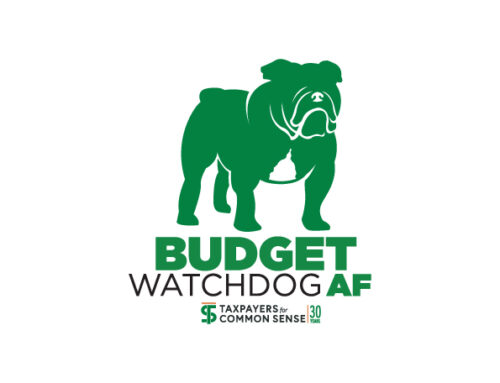One of the problems with brinksmanship is that it leaves you with virtually no good options if you fail. A massive omnibus spending bill at the end of a lame duck Congress is always a game of chance: Do enough lawmakers get enough out of the deal to put it over the top? Last night Senate Majority Leader Reid (D-NV) and Appropriations Chairman Inouye (D-HI) got their answer. No. So now they are going to do a short-term continuing resolution – a CR — to keep funding government for two months and kick the budget can down the road to February or so.
What that means is that federal agencies will have been limping along for, at that point, nearly half the fiscal year without any budget certainty. Congressional critics often point out inefficiencies in government; well, with these short-term CRs lawmakers are practically mandating inefficient government. Here at the end of the first quarter, Congress should put the fight over fiscal year 2011 out of its misery and do a year-long CR, which would allow the new Congress to start fresh on the FY2012 budget.
Much was made out of the 6,721 special interest projects – earmarks – littered throughout the 1,924 page omnibus, costing $8.3 billion. The earmarks were sought by Republicans and Democrats. Three of the top five earmarkers were Democrats and two were Republicans. The top dog was a Republican: Sen. Cochran (R-MS). The bill was drafted by majority and minority staff, so no one’s hands were clean when it comes to this $1.1 trillion pig in the poke that was being foisted on lawmakers and taxpayers. But in the end, the Republican support Democrats were counting on to get the 60 votes necessary to avoid a filibuster evaporated. Good. Voters are fed up with special interest spending, log-rolling and backroom bill-writing. As bad as a year-long continuing resolution is, the omnibus spending sausage is worse.
Lawmakers are fond of pointing out that the Constitution gives them the power of the purse. What good is the power if you don’t use it? In fact, funding government is the most basic job of Congress, and really the only thing they must do each year. It takes work. The federal budget is broken up into twelve separate bills. So if you think about it, to do it under regular order – bill by bill – requires 48 separate floor votes. One for each chamber – House and Senate – for the original bill, then once they come to an agreement one more time around for the conferenced bill. The clock starts ticking when the President submits his budget in early February and stops at the end of the fiscal year September 30. This session – out of the 48 floor votes – Congress had two measly votes in the House of Representatives. That’s it.
The Democratic majority lays the responsibility for this year’s funding failures at the feet of obstructionist Republicans. Hey, we know they weren’t going along, but they are, after all, the opposition. Majorities are elected to govern. We hope the new House Republican majority takes note.
In fact, one of the first things the 112th Congress will be turning to is cleaning up the mess of the 111th Congress and closing the books on the FY2011 spending bills. In order to not fall behind in FY2012 budgeting, they will probably do … a year-long continuing resolution. Or else they may find themselves in the same spot a year from now. Sigh. Taxpayers have a right to demand performance out of their government and out of their elected officials. It’s high time they deliver and give us the FY2012 budget before September 30, 2011.
####











Get Social